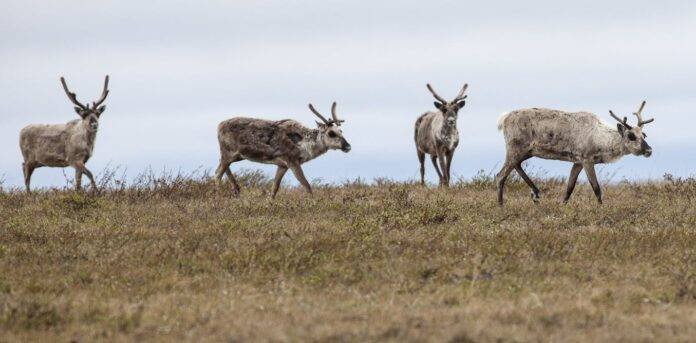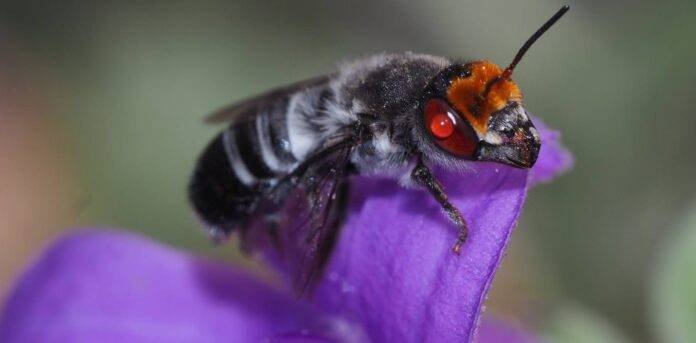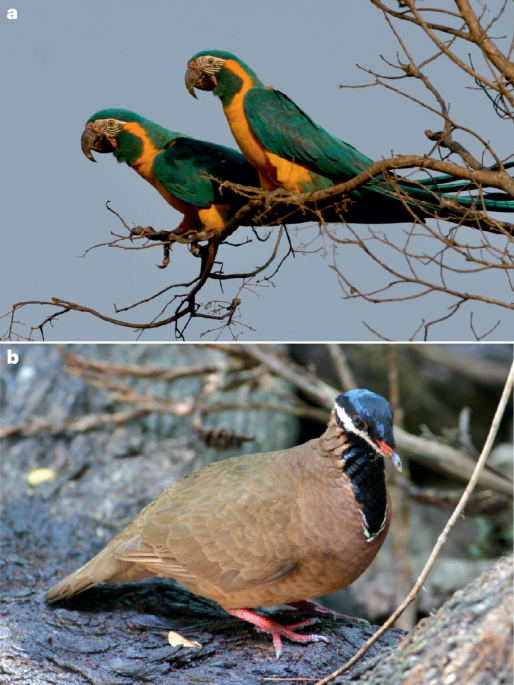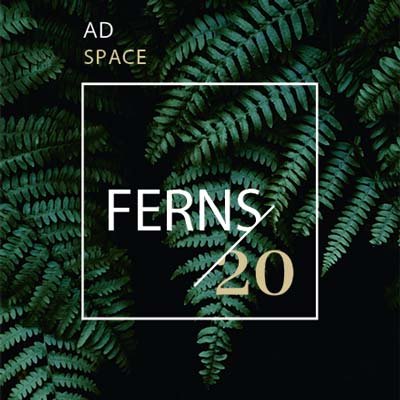Milly, P. C. D. et al. Stationarity is dead: whither water management? Science 319, 573–574 (2008).
Tonkin, J. D. et al. Prepare river ecosystems for an uncertain future. Nature 570, 301–303 (2019).
Blöschl et al. Changing climate both increases and decreases European river floods. Nature 573, 108–111 (2019).
Blöschl et al. Changing climate shifts timing of European floods. Science 357, 588–590 (2017).
Intergovernmental Panel on Climate Change (IPCC). Technical Summary. In Climate Change 2022—Impacts, Adaptation and Vulnerability: Working Group II Contribution to the Sixth Assessment Report of the Intergovernmental Panel on Climate Change 37–118 (Cambridge Univ. Press, 2023).
Merz, B. et al. Causes, impacts and patterns of disastrous river floods. Nat. Rev. Earth Environ. 2, 592–609 (2021).
Milly, P. C. D., Wetherald, R. T., Dunne, K. A. & Delworth, T. L. Increasing risk of great floods in a changing climate. Nature 415, 514–517 (2002).
Death, R. G., Fuller, I. C. & Macklin, M. G. Resetting the river template: the potential for climate-related extreme floods to transform river geomorphology and ecology. Freshw. Biol. 60, 2477–2496 (2015).
Dryden, R., Anand, M., Lehner, B. & Fluet-Chouinard, E. Do we prioritize floodplains for development and farming? Mapping global dependence and exposure to inundation. Glob. Environ. Change 71, 102370 (2021).
Rhoads, B. L. in River Dynamics: Geomorphology to Support Management 343–368 (Cambridge Univ. Press, 2020).
Han, Y. et al. The growth mode of built-up land in floodplains and its impacts on flood vulnerability. Sci. Total Environ. 700, 134462 (2020).
Knighton, D. Fluvial Forms & Processes: A New Perspective (Arnold, 1998).
Kline, M. Giving our rivers room to move: new strategy and contribution to protecting Vermont’s communities and ensuring clean water. Vt. J. Environ. Law 17, 733–765 (2016).
Lane, S. N., Tayefi, V., Reid, S. C., Yu, D. & Hardy, R. J. Interactions between sediment delivery, channel change, climate change and flood risk in a temperate upland environment. Earth Surf. Process. Landf. 32, 429–446 (2007).
Biron, P. M. et al. Freedom space for rivers: a sustainable management approach to enhance river resilience. Environ. Manage. 54, 1056–1073 (2014).
Evans, E. et al. Future flood risk management in the UK. Proc. Inst. Civ. Eng. Water Manag. 159, 53–61 (2006).
Rijke, J., Van Herk, S., Zevenbergen, C. & Ashley, R. Room for the River: delivering integrated river basin management in the Netherlands. Int. J. River Basin Manag. 10, 369–382 (2012).
Höckendorff, S. et al. Characterizing fish responses to a river restoration over 21 years based on species’ traits: fish responses to river restoration. Conserv. Biol. 31, 1098–1108 (2017).
van Alphen, S. in Adaptive Strategies for Water Heritage: Past, Present and Future (ed. Hein, C.) 309–323 (Springer, 2020).
Klijn, F., De Bruin, D., De Hoog, M. C., Jansen, S. & Sijmons, D. F. Design quality of room-for-the-river measures in the Netherlands: role and assessment of the quality team (Q-team). Int. J. River Basin Manag. 11, 287–299 (2013).
Poff, N. L. et al. The natural flow regime. BioScience 47, 769–784 (1997).
Ward, J. V., Tockner, K., Arscott, D. B. & Claret, C. Riverine landscape diversity. Freshw. Biol. 47, 517–539 (2002).
Poff, N. L. et al. Sustainable water management under future uncertainty with eco-engineering decision scaling. Nat. Clim. Change 6, 25–34 (2016).
Lynch, A. J. et al. People need freshwater biodiversity. WIREs Water 10, e1633 (2023).
WWF. Living Planet Report 2022 – Building a Nature Positive Society (WWF, 2022).
Dudgeon, D. et al. Freshwater biodiversity: importance, threats, status and conservation challenges. Biol. Rev. Camb. Philos. Soc. 81, 163–182 (2006).
Van Rees, C. B. et al. An interdisciplinary overview of levee setback benefits: supporting spatial planning and implementation of riverine nature‐based solutions. WIREs Water 11, e1750 (2024).
Knox, R. L., Wohl, E. E. & Morrison, R. R. Levees don’t protect, they disconnect: a critical review of how artificial levees impact floodplain functions. Sci. Total Environ. 837, 155773 (2022).
Dierauer, J., Pinter, N. & Remo, J. W. F. Evaluation of levee setbacks for flood-loss reduction, Middle Mississippi River, USA. J. Hydrol. 450–451, 1–8 (2012).
Heine, R. A. & Pinter, N. Levee effects upon flood levels: an empirical assessment. Hydrol. Process. 26, 3225–3240 (2012).
Curran, J. C., Dahl, T. A., Corum, Z. P. & Jones, K. E. Geomorphic evolution of a levee setback in a gravel-sand channel in Washington State. J. Hydraul. Eng. 151, 05024003 (2025).
Cluer, B. & Thorne, C. A stream evolution model integrating habitat and ecosystem benefits. River Res. Appl. 30, 135–154 (2014).
Graf, W. L. Damage control: restoring the physical integrity of America’s rivers. Ann. Assoc. Am. Geogr. 91, 1–27 (2001).
McIntosh, A. R., Greig, H. S., Warburton, H. J., Tonkin, J. D. & Febria, C. M. Ecosystem-size relationships of river populations and communities. Trends Ecol. Evol. 39, 571–584 (2024).
Opperman, J. J., Luster, R., McKenney, B. A., Roberts, M. & Meadows, A. W. Ecologically functional floodplains: connectivity, flow regime and scale. J. Am. Water Resour. Assoc. 46, 211–226 (2010).
Van Looy, K. et al. The three Rs of river ecosystem resilience: resources, recruitment and refugia. River Res. Appl. 35, 107–120 (2019).
Lawler, J. J. et al. The theory behind, and the challenges of, conserving nature’s stage in a time of rapid change: conserving Nature’s stage in a time of rapid change. Conserv. Biol. 29, 618–629 (2015).
Langbein, W. B. & Leopold, L. B. Quasi-equilibrium states in channel morphology. Am. J. Sci. 262, 782–794 (1964).
Wymore, A. S., Ward, A. S., Wohl, E. & Harvey, J. W. Viewing river corridors through the lens of critical zone science. Front. Water 5, 1147561 (2023).
Castro, J. M. & Thorne, C. R. The stream evolution triangle: integrating geology, hydrology and biology. River Res. Appl. 35, 315–326 (2019).
Hauer, C., Mandlburger, G. & Habersack, H. Hydraulically related hydro-morphological units: description based on a new conceptual mesohabitat evaluation model (MEM) using LiDAR data as geometric input. River Res. Appl. 25, 29–47 (2009).
Clilverd, H. M., Thompson, J. R., Heppell, C. M., Sayer, C. D. & Axmacher, J. C. Coupled hydrological/hydraulic modelling of river restoration impacts and floodplain hydrodynamics: modelling of river restoration impacts. River Res. Appl. 32, 1927–1948 (2016).
Wohl, E. et al. The natural sediment regime in rivers: broadening the foundation for ecosystem management. BioScience 65, 358–371 (2015).
Davis, N. G., Mathers, K. L., Hodson, R. & Matthaei, C. D. Monthly sampling reveals seasonal fine sediment fluctuations and riverine invertebrate community responses. Sci. Total Environ. 911, 168750 (2024).
Jennings, J. C., Bellmore, J. R., Armstrong, J. B. & Wisseman, R. W. Effects of process‐based floodplain restoration on aquatic macroinvertebrate production and community structure. River Res. Appl. 39, 1709–1723 (2023).
Bellmore, J. R., Baxter, C. V., Martens, K. & Connolly, P. J. The floodplain food web mosaic: a study of its importance to salmon and steelhead with implications for their recovery. Ecol. Appl. 23, 189–207 (2013).
Junk, W. J., Bayley, P. B. & Sparks, R. E. The flood pulse concept in river-floodplain systems. Can. Spec. Publ. Fish. Aquat. Sci. 106, 110–127 (1989).
Williams, R. D. et al. Let the river erode! Enabling lateral migration increases geomorphic unit diversity. Sci. Total Environ. 715, 136817 (2020).
Stein, A., Gerstner, K. & Kreft, H. Environmental heterogeneity as a universal driver of species richness across taxa, biomes and spatial scales. Ecol. Lett. 17, 866–880 (2014).
Heino, J. et al. Metacommunity organisation, spatial extent and dispersal in aquatic systems: patterns, processes and prospects. Freshw. Biol. 60, 845–869 (2015).
DeBoer, J. A., Thoms, M. C., Delong, M. D., Parsons, M. E. & Casper, A. F. Heterogeneity of ecosystem function in an ‘Anthropocene’ river system. Anthropocene 31, 100252 (2020).
Maasri, A. et al. Variation in macroinvertebrate community structure of functional process zones along the river continuum: new elements for the interpretation of the river ecosystem synthesis. River Res. Appl. 37, 665–674 (2021).
Wohl, E., Lininger, K. B. & Scott, D. N. River beads as a conceptual framework for building carbon storage and resilience to extreme climate events into river management. Biogeochemistry 141, 365–383 (2018).
Tockner, K. & Stanford, J. A. Riverine flood plains: present state and future trends. Environ. Conserv. 29, 308–330 (2002).
Bellmore, J. R. & Baxter, C. V. Effects of geomorphic process domains on river ecosystems: a comparison of floodplain and confined valley segments. River Res. Appl. 30, 617–630 (2014).
Robinson, C. T., Tockner, K. & Ward, J. V. The fauna of dynamic riverine landscapes: fauna of riverine landscapes. Freshw. Biol. 47, 661–677 (2002).
Armstrong, J. D., Kemp, P. S., Kennedy, G. J. A., Ladle, M. & Milner, N. J. Habitat requirements of Atlantic salmon and brown trout in rivers and streams. Fish. Res. 62, 143–170 (2003).
Ward, J. V. Riverine landscapes: biodiversity patterns, disturbance regimes and aquatic conservation. Biol. Conserv. 83, 269–278 (1998).
Gray, D., Scarsbrook, M. R. & Harding, J. S. Spatial biodiversity patterns in a large New Zealand braided river. N. Z. J. Mar. Freshw. Res. 40, 631–642 (2006).
Ruiz-Villanueva, V., Wyżga, B., Zawiejska, J., Hajdukiewicz, M. & Stoffel, M. Factors controlling large-wood transport in a mountain river. Geomorphology 272, 21–31 (2016).
Wyżga, B., Zawiejska, J., Mikuś, P. & Kaczka, R. J. Contrasting patterns of wood storage in mountain watercourses narrower and wider than the height of riparian trees. Geomorphology 228, 275–285 (2015).
Wohl, E., Dwire, K., Sutfin, N., Polvi, L. & Bazan, R. Mechanisms of carbon storage in mountainous headwater rivers. Nat. Commun. 3, 1263 (2012).
Guiney, M. R. & Lininger, K. B. Disturbance and valley confinement: controls on floodplain large wood and organic matter jam deposition in the Colorado Front Range, USA. Earth Surf. Process. Landf. 47, 1371–1389 (2022).
Hauer, F. R. et al. Gravel-bed river floodplains are the ecological nexus of glaciated mountain landscapes. Sci. Adv. 2, e1600026 (2016).
Wohl, E. et al. Rediscovering, reevaluating and restoring lost river-wetland corridors. Front. Earth Sci. 9, 653623 (2021).
Hu, S., Niu, Z., Chen, Y., Li, L. & Zhang, H. Global wetlands: potential distribution, wetland loss and status. Sci. Total Environ. 586, 319–327 (2017).
Steiger, J., Tabacchi, E., Dufour, S., Corenblit, D. & Peiry, J.-L. Hydrogeomorphic processes affecting riparian habitat within alluvial channel-floodplain river systems: a review for the temperate zone. River Res. Appl. 21, 719–737 (2005).
Datry, T., Corti, R., Belletti, B. & Piégay, H. Ground-dwelling arthropod communities across braided river landscape mosaics: a Mediterranean perspective. Freshw. Biol. 59, 1308–1322 (2014).
Klaar, M. J., Maddock, I. & Milner, A. M. The development of hydraulic and geomorphic complexity in recently formed streams in Glacier Bay National Park, Alaska. River Res. Appl. 25, 1331–1338 (2009).
Wyrick, J. R. & Pasternack, G. B. Geospatial organization of fluvial landforms in a gravel-cobble river: beyond the riffle-pool couplet. Geomorphology 213, 48–65 (2014).
Arscott, D. B., Tockner, K., van der Nat, D. & Ward, J. V. Aquatic habitat dynamics along a braided alpine river ecosystem (Tagliamento River, Northeast Italy). Ecosystems 5, 0802–0814 (2002).
Richards, K., Brasington, J. & Hughes, F. Geomorphic dynamics of floodplains: ecological implications and a potential modelling strategy. Freshw. Biol. 47, 559–579 (2002).
Malard, F., Uehlinger, U., Zah, R. & Tockner, K. Flood-pulse and riverscape dynamics in a braided glacial river. Ecology 87, 704–716 (2006).
Van Der Nat, D., Tockner, K., Edwards, P. J., Ward, J. V. & Gurnell, A. M. Habitat change in braided flood plains (Tagliamento, NE-Italy). Freshw. Biol. 48, 1799–1812 (2003).
Whited, D. C. et al. Climate, hydrologic disturbance and succession: drivers of floodplain pattern. Ecology 88, 940–953 (2007).
Stanford, J. A., Lorang, M. S. & Hauer, F. R. The shifting habitat mosaic of river ecosystems. SIL Proc. 1922–2010 29, 123–136 (2005).
Bunn, S. E. & Arthington, A. H. Basic principles and ecological consequences of altered flow regimes for aquatic biodiversity. Environ. Manage. 30, 492–507 (2002).
Palmer, M. & Ruhi, A. Linkages between flow regime, biota and ecosystem processes: implications for river restoration. Science 365, eaaw2087 (2019).
Tonkin, J. D. et al. Designing flow regimes to support entire river ecosystems. Front. Ecol. Environ. 19, 326–333 (2021).
McMullen, L. E., De Leenheer, P., Tonkin, J. D. & Lytle, D. A. High mortality and enhanced recovery: modelling the countervailing effects of disturbance on population dynamics. Ecol. Lett. 20, 1566–1575 (2017).
Lytle, D. A., Bogan, M. T. & Finn, D. S. Evolution of aquatic insect behaviours across a gradient of disturbance predictability. Proc. R. Soc. B Biol. Sci. 275, 453–462 (2008).
Lytle, D. A. & Poff, N. L. Adaptation to natural flow regimes. Trends Ecol. Evol. 19, 94–100 (2004).
Datry, T. et al. Causes, responses and implications of anthropogenic versus natural flow intermittence in river networks. BioScience 73, 9–22 (2023).
Mims, M. C. & Olden, J. D. Life history theory predicts fish assemblage response to hydrologic regimes. Ecology 93, 35–45 (2012).
Tonkin, J. D., Bogan, M. T., Bonada, N., Rios‐Touma, B. & Lytle, D. A. Seasonality and predictability shape temporal species diversity. Ecology 98, 1201–1216 (2017).
Bogan, M. T. & Lytle, D. A. Seasonal flow variation allows ‘time‐sharing’ by disparate aquatic insect communities in montane desert streams. Freshw. Biol. 52, 290–304 (2007).
Bonada, N., Rieradevall, M., Prat, N. & Resh, V. H. Benthic macroinvertebrate assemblages and macrohabitat connectivity in Mediterranean-climate streams of northern California. J. North Am. Benthol. Soc. 25, 32–43 (2006).
Riebe, C. S., Sklar, L. S., Overstreet, B. T. & Wooster, J. K. Optimal reproduction in salmon spawning substrates linked to grain size and fish length. Water Resour. Res. 50, 898–918 (2014).
Kemp, P., Sear, D., Collins, A., Naden, P. & Jones, I. The impacts of fine sediment on riverine fish. Hydrol. Process. 25, 1800–1821 (2011).
Rossi, G. J. et al. Foodscapes for salmon and other mobile consumers in river networks. BioScience 74, 586–600 (2024).
Townsend, C. R. The patch dynamics concept of stream community ecology. J. North Am. Benthol. Soc. 8, 36–50 (1989).
Meitzen, K. M. Lateral channel migration effects on riparian forest structure and composition, Congaree River, South Carolina, USA. Wetlands 29, 465–475 (2009).
Tockner, K., Malard, F. & Ward, J. V. An extension of the flood pulse concept. Hydrol. Process. 14, 2861–2883 (2000).
Gurnell, A. Plants as river system engineers. Earth Surf. Process. Landf. 39, 4–25 (2014).
Stecca, G., Hicks, D. M., Measures, R. & Henderson, R. Numerical modeling prediction of vegetation trajectories under different flow regimes in New Zealand braided rivers. J. Geophys. Res. Earth Surf. 128,1–23 (2023).
Bertoldi, W., Drake, N. A. & Gurnell, A. M. Interactions between river flows and colonizing vegetation on a braided river: exploring spatial and temporal dynamics in riparian vegetation cover using satellite data. Earth Surf. Process. Landf. 36, 1474–1486 (2011).
van Oorschot, M., Kleinhans, M., Geerling, G. & Middelkoop, H. Distinct patterns of interaction between vegetation and morphodynamics. Earth Surf. Process. Landf. 41, 791–808 (2016).
Corenblit, D., Tabacchi, E., Steiger, J. & Gurnell, A. M. Reciprocal interactions and adjustments between fluvial landforms and vegetation dynamics in river corridors: a review of complementary approaches. Earth Sci. Rev. 84, 56–86 (2007).
Caruso, B. S., Edmondson, L. & Pithie, C. Braided river flow and invasive vegetation dynamics in the Southern Alps, New Zealand. Environ. Manage. 52, 1–18 (2013).
Harris, H. A. L., Tonkin, J. D. & McIntosh, A. R. in Resilience and Riverine Landscapes 157–175 (Elsevier, 2024).
Winemiller, K. O., Flecker, A. S. & Hoeinghaus, D. J. Patch dynamics and environmental heterogeneity in lotic ecosystems. J. North Am. Benthol. Soc. 29, 84–99 (2010).
Ward, J. V. The four-dimensional nature of lotic ecosystems. J. North Am. Benthol. Soc. 8, 2–8 (1989).
Thorp, J. H., Thoms, M. C. & Delong, M. D. The riverine ecosystem synthesis: biocomplexity in river networks across space and time. River Res. Appl. 22, 123–147 (2006).
Patrick, C. J. et al. The application of metacommunity theory to the management of riverine ecosystems. WIREs Water 8, e1557 (2021).
Fernandes, C. C. Lateral migration of fishes in Amazon floodplains. Ecol. Freshw. Fish 6, 36–44 (1997).
Li, Z. et al. Seasonal variation in the metacommunity structure of benthic macroinvertebrates in a large river-connected floodplain lake. Ecol. Indic. 136, 108662 (2022).
Seliger, C. & Zeiringer, B. in Riverine Ecosystem Management: Science for Governing Towards a Sustainable Future (eds Schmutz, S. & Sendzimir, J.) 171–186 (Springer, 2018).
Stanford, J. A. & Ward, J. V. The hyporheic habitat of river ecosystems. Nature 335, 64–66 (1988).
Hjort, J., Gordon, J. E., Gray, M. & Hunter, M. L. Why geodiversity matters in valuing nature’s stage. Conserv. Biol. 29, 630–639 (2015).
Cleveland, C. C., Neff, J. C., Townsend, A. R. & Hood, E. Composition, dynamics and fate of leached dissolved organic matter in terrestrial ecosystems: results from a decomposition experiment. Ecosystems 7, 175–285 (2004).
Langhans, S. D., Tiegs, S. D., Gessner, M. O. & Tockner, K. Leaf-decomposition heterogeneity across a riverine floodplain mosaic. Aquat. Sci. 70, 337–346 (2008).
Wohl, E. An integrative conceptualization of floodplain storage. Rev. Geophys. 59, e2020RG000724 (2021).
Datry, T., Larned, S. T. & Tockner, K. Intermittent rivers: a challenge for freshwater ecology. BioScience 64, 229–235 (2014).
Von Schiller, D. et al. Sediment respiration pulses in intermittent rivers and ephemeral streams. Glob. Biogeochem. Cycles 33, 1251–1263 (2019).
Price, A. N. et al. Biogeochemical and community ecology responses to the wetting of non-perennial streams. Nat. Water 2, 815–826 (2024).
Larsen, S. et al. Flooding and hydrologic connectivity modulate community assembly in a dynamic river-floodplain ecosystem. PLoS ONE 14, e0213227 (2019).
Moran, P. The statistical analysis of the Canadian Lynx cycle. Aust. J. Zool. 1, 291 (1953).
Langhans, S. D., Tiegs, S. D., Uehlinger, U. & Tockner, K. Environmental heterogeneity controls organic-matter dynamics in river-floodplain ecosystems. Pol. J. Ecol. 54, 675–680 (2006).
Thomaz, S. M., Bini, L. M. & Bozelli, R. L. Floods increase similarity among aquatic habitats in river-floodplain systems. Hydrobiologia 579, 1–13 (2007).
Holgerson, M. A. et al. Floodplains provide important amphibian habitat despite multiple ecological threats. Ecosphere 10, e02853 (2019).
Paetzold, A., Yoshimura, C. & Tockner, K. Riparian arthropod responses to flow regulation and river channelization. J. Appl. Ecol. 45, 894–903 (2008).
Kennedy, T. L. & Turner, T. F. River channelization reduces nutrient flow and macroinvertebrate diversity at the aquatic terrestrial transition zone. Ecosphere 2, 1–13 (2011).
Tiegs, S. D. et al. Global patterns and drivers of ecosystem functioning in rivers and riparian zones. Sci. Adv. 5, eaav0486 (2019).
Baxter, C. V., Fausch, K. D. & Carl Saunders, W. Tangled webs: reciprocal flows of invertebrate prey link streams and riparian zones: prey subsidies link stream and riparian food webs. Freshw. Biol. 50, 201–220 (2005).
Nakano, S., Miyasaka, H. & Kuhara, N. Terrestrial–aquatic linkages: riparian arthropod inputs alter trophic cascades in a stream food web. Ecology 80, 2435–2441 (1999).
Rooney, N., McCann, K. S. & Moore, J. C. A landscape theory for food web architecture. Ecol. Lett. 11, 867–881 (2008).
Bellmore, J. R., Baxter, C. V. & Connolly, P. J. Spatial complexity reduces interaction strengths in the meta‐food web of a river floodplain mosaic. Ecology 96, 274–283 (2015).
McCann, K., Hastings, A. & Huxel, G. R. Weak trophic interactions and the balance of nature. Nature 395, 794–798 (1998).
Jacquet, C., Carraro, L. & Altermatt, F. Meta‐ecosystem dynamics drive the spatial distribution of functional groups in river networks. Oikos 2022, e09372 (2022).
Paetzold, A., Schubert, C. J. & Tockner, K. Aquatic terrestrial linkages along a braided-river: riparian arthropods feeding on aquatic Insects. Ecosystems 8, 748–759 (2005).
Tockner, K., Paetzold, A., Karaus, U., Claret, C. & Zettel, J. in Braided Rivers (eds Sambrook Smith, G. H. et al.) 339–359 (Blackwell, 2006).
Trapp, J. R., Beier, P., Mack, C., Parsons, D. R. & Paquet, P. C. Wolf, Canis lupus, den site selection in the Rocky Mountains. Can. Field Nat. 122, 49–56 (2008).
Pierce, R. Regional patterns of migration in the Banded Dotterel (Charadrius bicintus). Notornis 46, 101–122 (1999).
Caruso, B. S. Project River Recovery: restoration of braided gravel-bed river habitat in New Zealand’s high country. Environ. Manage. 37, 840–861 (2006).
Dudgeon, D. Conservation of freshwater biodiversity in Oriental Asia: constraints, conflicts and challenges to science and sustainability. Limnology 1, 237–243 (2000).
Tonkin, J. D. in Encyclopedia of Inland Waters (ed. Poff, L. N.) 653–664 (Elsevier, 2022).
Poff, N. L. Beyond the natural flow regime? Broadening the hydro-ecological foundation to meet environmental flows challenges in a non-stationary world. Freshw. Biol. 63, 1011–1021 (2018).
Costanza, R. et al. The value of the world’s ecosystem services and natural capital. Nature 387, 253–260 (1997).
Ellis, P. W. et al. The principles of natural climate solutions. Nat. Commun. 15, 547 (2024).
Scott, D. N. & Wohl, E. Geomorphology and climate interact to control organic carbon stock and age in mountain river valley bottoms. Earth Surf. Process. Landf. 45, 1911–1925 (2020).
Sutfin, N. A., Wohl, E., Fegel, T., Day, N. & Lynch, L. Logjams and channel morphology influence sediment storage, transformation of organic matter, and carbon storage within mountain stream corridors. Water Resour. Res. 57, e2020WR028046 (2021).






